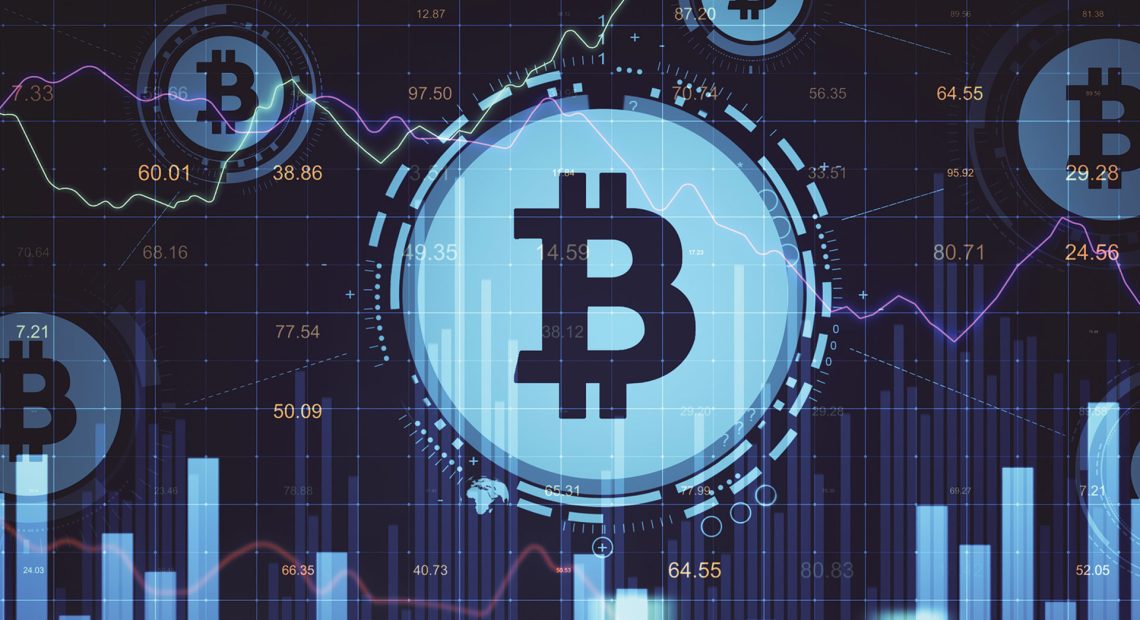
Deciphering the ‘Crypto Market’
What Are the Risks, Rewards, and Unknown Tax Implications?
By Brendan Cawley, EA and Ian Coddington, CPA

While cryptocurrency has been around since 2008, its popularity has soared over the past two years as people dove into new interests during the pandemic. Whether you used your time in lockdown to learn how to bake banana bread or mine Dogecoins, it’s important to note that the latter may have come with some tax implications.
If you dipped your toes in the virtual currency waters, you may now be wondering — how will my transactions during the year affect my tax return? Our goal here is to give some basic insight into the crypto market, decentralized finance (‘DeFi’), and how the transactions along your cryptocurrency journey can affect your tax return this year and beyond.
What Is Cryptocurrency?
The IRS currently views cryptocurrency as a type of virtual currency. Virtual currency, such as Bitcoin, Ether, Roblox and V-Bucks, to name a few examples, is a digital representation of value, rather than a representation of the U.S. dollar or a foreign currency (‘real currency’), that functions as a unit of account, a store of value, and a medium of exchange.

Brendan Cawley

Ian Coddington
Cryptocurrency uses cryptography to secure transactions that are digitally recorded on a distributed ledger, such as a blockchain. The blockchain technology allows participants to confirm transactions without the need for central clearing authority.
“The landscape of cryptocurrency and digital assets is evolving daily. The variety of investment options continues to expand, as does the number of investors.”
With that in mind, decentralized finance (DeFi) has quickly become the hottest trend in blockchain technology, but it comes with its own uniquely complicated and confusing tax situations. And if learning how to navigate cryptocurrency and DeFi wasn’t complex enough, you have to do so with very little IRS guidance.
What Is Decentralized Finance?
When you think of centralized finance, you might think of banks, such as Bank of America or JPMorgan, which traditionally offer savings, lending, and investment options for their customers. Services often come with fees and can result in delays to accessing or withdrawing funds.
By using blockchain technology, users can validate transactions from peer to peer within a matter of seconds. Transactions can take place all around the world across computer networks without the need of a central authority. This is where DeFi comes in, where users can engage in contracts for lending, borrowing, and other financial services at the click of a button. These contracts are created through algorithms, rather than underwritten by a loan officer. Additionally, fees associated with central banks and the delay in completing certain transactions are no longer an issue.
There are several popular DeFi platforms, such as UniSwap, PancakeSwap, Fantom, Aave, and SushiSwap, to name a few. These platforms offer different services to consumers: staking, liquidity pools, yield farming, along with traditional lending and borrowing. Investors who have gotten in at the initial stages have been seeing massive returns on their investments. Services such as yield farming and liquidity pools lock in cryptocurrency assets to facilitate blockchain transactions and pay participants rewards in the form of cryptocurrency. However, the IRS has not determined specific guidance on the treatment of specific transactions within the DeFi space.
Consumers and investors are tempted to participate in the Defi market by varying annual percentage yields (APY) of 3% to 15%, sometimes even more. This is a far cry from the 0.01% APY that you might get in your local bank’s saving account or the 1% APY in a certificate of deposit. The riskiness involved in these transactions, as well as the potential tax implications, might scare off some investors, but with a $114 billion market cap in 2022, there are plenty more who are ready to enter the DeFi space.
How Complicated Can It Get?
With the DeFi foundation laid, let’s color the conversation through a real-life example with some surprising complexities. When exploring the world of DeFi, it is unlikely you’ll venture far without hearing about OlympusDAO. What is OlympusDAO? It is a decentralized reserve currency protocol based on the OHM token.
Hopefully, this example will illustrate just how quickly crypto can get complicated.
“While some trends at the beginning of the pandemic, such as whipped coffee and banana bread, seemed to dim their lights, the cryptocurrency market is continuing to blaze new trails.”
Participants seek returns through staking and bonding strategies. ‘Stakers’ stake their OHM tokens into a pool with other like-minded individuals. Those OHM tokens are then put to work on the blockchain and earn rewards in the form of more OHM. Alternatively, those choosing to engage in the bonding strategy provide liquidity in the form of other crypto assets or DAI tokens to the Olympus Treasury. These assets are the necessary backing for new OHM minted and help to provide stability to the value of OHM. To compensate the participants for bonding, the protocol makes OHM available for purchase at a discount after a vesting period.
Now suppose the staking option sounds appetizing. You open your account, you ensure you have sufficient funds, and you navigate to a centralized exchange in search of OHM. Oh no … OHM is not currently traded on a centralized exchange. So what do you do? You take a deep breath and turn to Google.
Quickly, you will recognize that OHM can only be purchased through a decentralized exchange (DEX) and you need the appropriate cryptocurrency, Ethereum (ETH), to participate. You purchase ETH on the centralized exchange for USD, which is a non-taxable event. With the ETH in hand (in your crypto wallet), you navigate to a DEX such as SushiSwap and exchange ETH for OHM. This exchange is a capital event, and gain/loss should be calculated. The cost basis of the newly acquired OHM should consider this gain or loss. OHM can now be staked on OlympusDAO in exchange for sOHM (‘staked’ OHM).
When OHM becomes sOHM, there is an argument to say this is a property exchange and taxable again as capital gain/loss. The sOHM earns more sOHM over time, which is ordinary income upon receipt. Eventually, you might decide to cash out your sOHM. When sOHM is exchanged back to OHM, a taxable exchange has occurred again. Finally, you convert your new pool of OHM back to ETH, which, as you likely guessed, is taxable as capital gain/loss.
While this example is considered fairly simple and common, this journey alone noted five different taxable events. Keep in mind the software currently available often struggles to appropriately track the tax basis of your crypto property and ordinary income received through each of the steps. Furthermore, trading fees can be challenging to track. When preparing for the 2021 filing season, consider reaching out to a qualified CPA.
Now What?
The landscape of cryptocurrency and digital assets is evolving daily. The variety of investment options continues to expand, as does the number of investors. As you consider joining the cryptocurrency marketplace, there are a few things to keep in mind.
First and foremost, investors should consider investing in cryptocurrency-tracking software. Subscriptions vary in price and quality. Providers are racing to improve their systems and close the reporting gaps for DeFi, NFTs, and play-to-earn. Staying apprised of new developments in this space is key for taxpayers as the IRS increases oversight for cryptocurrency.
Starting in 2023, the IRS will require that 1099-Bs are issued to taxpayers who invest in cryptocurrency. These forms will capture the proceeds and cost basis from the cryptocurrency investments. Taxpayers should be mindful of tracking these items independently to ensure accuracy.
The IRS is already issuing an increased number of notices to taxpayers who are known or suspected to invest in cryptocurrency. These notices typically are numbered 6174, 6174-A, and 6173. Only notice 6173 requires a response, but each notice indicates that the IRS is watching the taxpayer for cryptocurrency investments. In addition, the IRS requires that Form 8300 be filed by a taxpayer who receives more than $10,000 in digital assets starting after Jan. 1, 2023. Failure to report these details could result in civil penalties or felony charges.
Finally, please remember that the IRS’s definition of cryptocurrency and digital assets could change dramatically in the coming years. In fact, as of this past week, there has been a new court case that resulted in a decision that contradicts the IRS’s previous position on staking rewards.
Additionally, while cryptocurrency is currently viewed as property, if the IRS recharacterizes these investments as securities, then that could result in significant tax implications. For example, cryptocurrency is currently not subject to wash-sale rules presently due to its classification as property. This is an ever-evolving environment and requires prudence.
While some trends at the beginning of the pandemic, such as whipped coffee and banana bread, seemed to dim their lights, the cryptocurrency market is continuing to blaze new trails. It’s important to work with a qualified tax preparer to navigate the complex tax situations that come with entering the cryptocurrency marketplace.
This material is not intended to serve as tax or finance advice. You should obtain any appropriate professional advice relevant to your particular circumstances by consulting an advisor.
Brendan Cawley, EA, is a tax supervisor with the Holyoke-based accounting firm Meyers Brothers Kalicka, P.C., and Ian Coddington, CPA, is a senior associate with MBK. Lauren Foley, MSA, and Anthony Romei, MBA, both associates with the firm, also contributed to this article.





